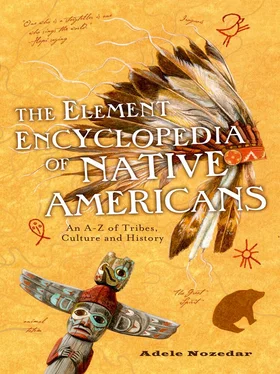At the outbreak of measles, then, a chief and another Cayuse visited the mission in search of medicine, already angry with Whitman since, as well as any other grudges they had against him, they blamed the mission for the disease. Whitman was attacked and killed. Shortly afterward, the angry Cayuse attacked again, killing Narcissa along with ten other white people.
An army was organized by Oregon County officials, who retaliated by raiding a Cayuse settlement and killing some 30 people. The Natives in the area, including the Walla Walla and the Palouse, allied with the Cayuse against the Oregon army. Cornelius Gilliam, the army leader, was shot by his own gun and his troops fled. In the meantime, the two Cayuse who had visited the mission for the medicine, Tomahas and Tilokaikt, had fled immediately after the incident. Tired of hiding, after two years they gave themselves in, hoping for mercy. But they were sentenced to death by hanging.
The Cayuse uprising caused change in Oregon, with new forts and military posts being built; this in turn exacerbated mistrust between the Natives and the white people, which led to more wars. In time, the Cayuse were forced onto a reservation in 1853, in northeastern Oregon and southeastern Washington. Whitman was honored by having a town named after him in Washington.
A tool used as a scraper (for scraping hides, for example), as an ax for chopping meat, as a skinning knife, for woodworking, and also as a weapon of war, a Celt was made from hard stone, shaped in the form of a hatchet but without a handle.
This is the Siouxname for the ceremonial smoking pipe, and also the ceremony that features it. An ancient legend has it that the chanunpa was brought to the people by the White Buffalo Calf Woman, in order that it might enable the tribes to communicate with the sacred and divine worlds of The Great Mystery, or Wakan Tanka.
A member of the Iroquoianstock and language family, the Cherokee are one of the more prominent tribes in Native American history, and also had a crucial role to play in the shaping of the United States.
The oral history of the tribe records that the Cherokee migrated south from the Great Lakes, settling in southwest Virginia, western North Carolina, South Carolina, northeastern Georgia, and northeastern Alabama. There is no date accorded to the start of this migration. In their own language, the Cherokee refer to themselves as Tsalagi .
The Spanish explorer De Sotowas the first European to encounter the Cherokee, in 1540. They had further considerable contact with the Europeans in the 1700s, and in the 1800s the white settlers referred to the Cherokee as one of the Five Civilized Tribesbecause it was deemed that the people had adopted enough of the characteristics of Europeans to be deemed “civilized” by European standards.
Respected by the whites in ways that perhaps other Indians were not, by 1825, 47 white men and 83 white women had actually married into the tribe. The Cherokee were the first of the Indian Nationsto accept the European way of schooling and farming. By 1808, they had established a Cherokee police force, for example, and two years later had abolished “blood vengeance” (essentially, long-running feuds). Further, by 1820 the Cherokee had emulated the style of government belonging to the United States, and in 1825 had a designated capital city of the Cherokee Nation, a town that was formerly known as New Town and was renamed New Echota.
However, as well as benefits, the European settlers had brought with them other things that did the Cherokee no good at all. Of the population of 6,000 Cherokee people spread across some 64 settlements, smallpoxclaimed half that population between 1738 and 1739; further Cherokee people committed suicide, unable to live with the severe disabilities and disfigurements that came in the wake of the disease.
It was the Cherokee who were the first to turn their language into written shapes and symbols with the creation of a Cherokee alphabet by the prominent Cherokee tribal member, Sequoyah, who was born of a Cherokee mother and a white father. It is certain that his mixed-race background inspired the need to communicate in the same way as the white settlers, and be able to send letters home and receive information from far afield. Because of Sequoyah’s syllabary, we have access to documents written by the didanvwisgi —the Cherokee medicine men, who were the only ones who could read and write, since the letters of the alphabet were considered extremely sacred and powerful. The Christian Bible was subsequently translated into Cherokee, and a bilingual Cherokee newspaper, the Cherokee Phoenix, was established in 1828. This was the first Native American newspaper.
Prior to the 19th century, Cherokee society was divided into two parts: the “White” and the “Red.” The elders of the White society represented the seven clans of the Cherokee. These elders were effectively the hereditary priests, or Ani Kutani , who led ceremonies and prayers, and performed healing acts and rituals of purification. Warfare was considered by this group to be “unclean.” The Red organization was responsible for warfare; after engaging in combat, the warriors had to be ritually purified and cleansed before they were permitted to re-enter the everyday life of the tribe. For some reason, by the time the Europeans encountered them, this caste-style system had all but disappeared, and the shamansof the Cherokee were chosen according to their skills rather than their birth.
Prior to the 19th century the Cherokee were also polygamous, a practice that was more common among the wealthier male tribal members. The tribe were also matrilineal—any children born were considered to belong to the clan of the mother, not the father. Also, when children were born, the mother’s brother, rather than their father, was considered to be the main influence on the children. Couples were allowed to divorce freely. Women made all the major decisions regarding the family and also with respect to the leadership of the tribe itself.
Alliances between the white settlers and the Cherokee were cemented by marriage even before the 19th century. The offspring from such marriages helped to build a bridge between the two cultures, and none in a more practical and ingenious way than Sequoyah.
It was rarer for a Cherokee man to marry a white woman than for a Cherokee woman to marry a white man. If the former happened their children would be disadvantaged in that, because of the matrilineal law, they would not be considered to belong to either Nation, having been born “outside” the clan and therefore not Cherokee. However, the progressive Cherokee people passed a law in 1825 stating that children born to a Cherokee man and a white woman would be included as full tribal members from then on.
Later in the 1800s, however, the U.S. Government began to impose restrictions on inter-racial marriages. A European man now had to gain the approval of ten blood relatives of his prospective bride. Then, if the marriage still went ahead, the husband’s rights were restricted. He couldn’t hold any sort of tribal position and would also remain subject to the laws of the United States above those of the tribe. Therefore it’s not surprising that common law marriages were popular, being easier in many ways for both parties.
Gold was discovered in Cherokee country, in Georgia, in the 1820s. The Europeans, despite all their respect for the Cherokee, lost all consideration for the Native people in the face of potential wealth, and made moves to eject them from their hereditary lands. Horsesand cattle were stolen; homes and farms were destroyed. And in the late 1830s the U.S. Army simply corraled the Cherokee and forced them to march west to the Indian Territoryin Oklahoma, as part of the Indian Removal Act. Many Indians perished en route to their newly designated homeland. Once the straggling Cherokee survivors arrived, they found that they had joined Chickasaw, Choctaw, Seminole, and CreekIndians—others of the Five Civilized Tribes—and would go on to fight on the side of the Confederate States in the Civil War.
Читать дальше












